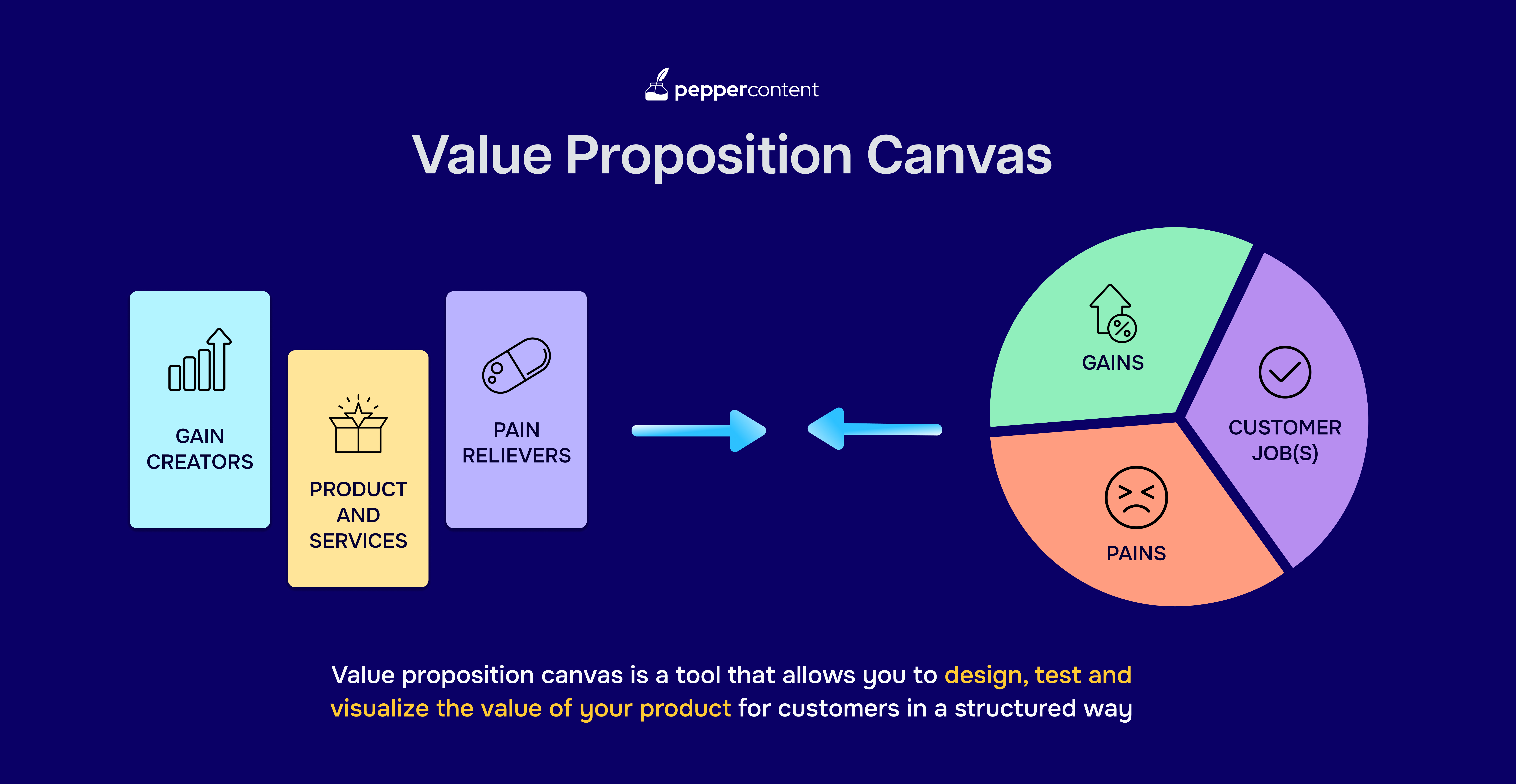Building a Winning Startup Content Marketing Strategy

Are you ready to take your startup to the next level? Well, buckle up because we’re about to embark on a journey that will revolutionize your startup content marketing strategy. Content marketing has become the backbone of successful startups, and it’s no surprise why. It allows you to connect with your audience, build brand awareness, and drive growth like never before.
In today’s hyper-competitive business landscape, having a well-defined content marketing strategy is not just optional; it’s essential. According to recent studies, companies that prioritize content marketing experience six times higher conversion rates compared to those that don’t.
But here’s the thing: building an effective content marketing strategy isn’t as simple as churning out blog posts and social media updates. It requires careful planning, meticulous execution, and staying ahead of the curve. So, let’s dive in and explore the key steps to building a winning startup content marketing strategy.
First things first, let’s talk about the benefits of having a well-defined strategy in place. A solid content marketing strategy helps you:
- Establish credibility and authority in your industry.
- Enables you to attract and retain customers by providing valuable information and engaging experiences.
- Allows you to differentiate yourself from competitors and build long-lasting relationships with your target audience.
Now that we understand the importance of a well-crafted content marketing strategy, let’s move on to the next steps.
1. Understanding Your Startup’s Unique Value Proposition
In the vast and competitive world of startups, having a unique value proposition (UVP) is crucial for standing out from the crowd. Your UVP is what sets you apart from your competitors, and it forms the foundation of your content marketing strategy.
To put it simply, your UVP is the answer to this question: Why should customers choose your start-up over others in the market? It’s about identifying what makes your product or service special, and how it solves a problem or fulfills a need better than anyone else.
Uber revolutionized the transportation industry by offering unparalleled convenience. With just a few taps on their smartphones, users can request a ride and have a driver pick them up within minutes. This convenience factor quickly made Uber a household name and disrupted the traditional taxi business.
It is important to identify and leverage your UVP in your content strategy for startup. By focusing on what makes you unique, you can create content that resonates with your target audience and sets you apart from the competition.

2. Defining Your Target Audience
Understanding your target audience is absolutely crucial for creating an effective startup content marketing strategy. You need to know who you are targeting in order to craft content that resonates with them and drives engagement.
To get started, conduct thorough market research to gain insights into your target audience’s demographics, interests, pain points, and preferences. This will help you create accurate buyer personas that represent your ideal customers.
Remember, defining your target audience is an ongoing process. As your startup grows and evolves, so may your target market. Continuously gather feedback from your customers and adapt your content strategy for startup accordingly.
3. Setting Clear Goals and Objectives
When it comes to building a winning content strategy for start-ups, one of the most crucial steps is setting clear goals and objectives. Without a clear direction, your content efforts can become aimless and ineffective. By establishing specific, measurable, attainable, relevant, and time-bound (SMART) goals, you can align your content marketing strategy with the overall business objectives and track progress effectively.
When setting your own goals and objectives, it’s important to consider various factors such as increasing brand awareness, driving website traffic, generating leads, nurturing customer relationships, or boosting sales. Each objective should be aligned with your start-up’s unique value proposition and cater to the needs of your target audience.
By having well-defined goals in place, you can not only keep your content marketing strategy on track but also measure its success accurately. This allows you to make data-driven decisions about what is working and what needs improvement.
4. Selecting Relevant Content Channels
When it comes to content marketing for your start-up, choosing the right channels to distribute your content is key. You want to ensure that your message reaches your target audience effectively and engages them in a way that aligns with your business goals. So, let’s explore some of the different content channels available and how to select the ones that are most relevant for your start-up.
- Blogs
- Social media platforms
- Email newsletters
- Podcasts
- Website
To choose the most relevant channels for your start-up, consider factors such as your target audience demographics, preferences, and behaviors. If you’re targeting a younger demographic, platforms like Instagram or TikTok might be more effective. On the other hand, if you’re targeting professionals or B2B clients, LinkedIn may be a better fit.

5. Developing a Content Creation Process
Creating high-quality content consistently is key to a successful startup content marketing strategy. However, without a clear and organized content creation process, it can be challenging to maintain consistency and meet deadlines.
A content creation process provides structure and ensures that everyone involved in creating content is on the same page. It helps streamline the workflow, improves efficiency, and maintains the quality of the content produced. So, let’s dive into the essential steps of developing an effective content creation process.
- Brainstorming Ideas: Consider using tools like mind maps or collaborative platforms to capture and organize ideas effectively.
- Conducting Research: Once you have a list of potential topics, conduct thorough research to gather relevant information, statistics, and insights.
- Creating Outlines: Before diving into writing, develop outlines for each piece of content.
- Writing Drafts: With detailed outlines in hand, writers can start crafting their initial drafts.
- Editing: After completing the first drafts, assign dedicated editors or proofreaders to review and refine the content.
- Collaboration: Collaboration between subject matter experts within your team and professional writers can add depth and expertise to your content.
- Publishing and Distribution: Once the content is edited and finalized, it’s time to publish and distribute it across your selected channels.
6. Creating Valuable and Engaging Content
When it comes to content marketing for startups, one thing is clear: you need to create content that grabs attention, provides value, and keeps your audience coming back for more. But how exactly do you go about creating high-quality, engaging content?
- First and foremost, storytelling is key. Humans are wired to connect with stories, so use this to your advantage.
- Visual elements also play a crucial role in creating engaging content. Break up the text with eye-catching images, videos, and infographics that help convey your message in a visually appealing way.
- Incorporate data-backed insights into your content. People love facts and figures that support claims or offer valuable information.
Now let’s look at an example of a brand that has mastered the art of creating valuable and engaging content: Blendtec. This blender manufacturer took a seemingly mundane product and turned it into a viral sensation with their “Will It Blend?” video series. The videos showcased the blender’s capabilities by blending unusual items like iPhones and golf balls. Not only did these videos entertain viewers, but they also demonstrated the blender’s power and durability in a fun and engaging way.

7. Implementing SEO Strategies
If you want to drive organic traffic to your start-up’s website or blog, you need to implement effective search engine optimization (SEO) strategies. SEO is like the secret sauce that helps your content be discovered by your target audience amidst the vast sea of online information.
Why is SEO crucial for startup content marketing? Well, consider this stat: 75% of users never scroll past the first page of search engine results. If your startup’s website doesn’t make it to that coveted first page, chances are, your target audience won’t find you either. That’s where SEO comes in – it helps improve your website’s visibility and ranking on search engine result pages. Use the below techniques to top SERPs:
- Keyword research
- On-page optimization
- Link building
8. Analyzing and Tracking Performance
Monitoring key metrics allows you to assess the effectiveness of your content and make data-driven decisions to optimize your content strategy for startups.
- One of the essential metrics to track is website traffic. By monitoring the number of visitors to your site, you can determine whether your content is attracting a substantial audience.
- Conversion rates are another critical metric to measure the success of your content marketing efforts. This metric helps you understand how effective your content is in driving desired actions from your audience, such as signing up for a newsletter or making a purchase.
- Data analytics plays a significant role in optimizing content marketing strategies.
9. Iterating and Optimizing Your Strategy
Building a successful content marketing strategy for your start-up requires constant adaptation and improvement. The digital landscape is ever-evolving, and it’s crucial to stay ahead of the curve. This is where iteration and optimization come in.
To truly maximize the effectiveness of your content marketing start-up efforts, you must be willing to analyze data, gather feedback, and make necessary adjustments. It’s not enough to simply set goals and create content; you must also monitor its performance and iterate based on the results.
One prime example of a company that excels at iterating and optimizing its content strategy is Buzzfeed. Known for its viral articles, quizzes, and videos, Buzzfeed constantly innovates to cater to changing audience preferences. They pay close attention to metrics such as engagement rates, social shares, and time on the page to determine what content resonates best with their audience.
By analyzing these metrics, Buzzfeed can identify patterns and trends that guide its future content creation efforts. If they notice a particular type of article or video gaining significant traction, they will create more content in that vein, knowing it will likely perform
Congratulations! You’ve now equipped yourself with the knowledge and tools to build a winning content marketing strategy for your start-up. Remember, taking action is key. So go ahead, apply these content marketing tips for startups, and watch them thrive!
Latest Blogs
Explore how Google’s 2025 AI search updates triggered ranking chaos. Learn actionable strategies to adapt your SEO for AI Overviews, zero-click searches, and SERP volatility. Stay ahead now.
Learn how to rank on AI search engines like ChatGPT, Perplexity, and Gemini by optimizing your content for authority, structure, and relevance. Stay ahead in AI-driven search with this strategic guide.
Explore the best healthcare SEO services for your medical practice. Improve online visibility and effectively reach more patients in need of your services.
Get your hands on the latest news!
Similar Posts

Content Strategy
5 mins read
Choosing The Best Healthcare Marketing Agency For Effective Content Solutions

Content Marketing
4 mins read
Top 10 Agencies B2B SaaS Content Marketing for B2B Success

B2C Marketing
5 mins read